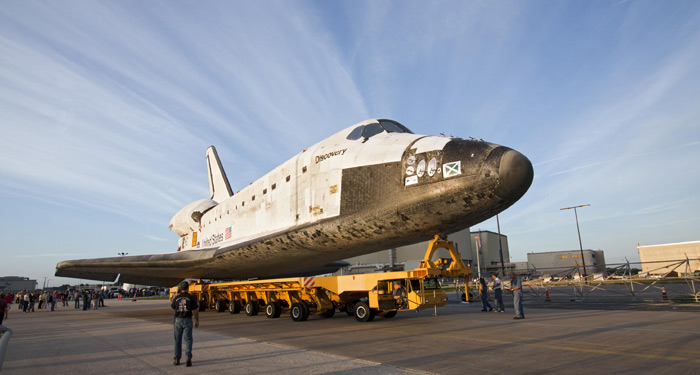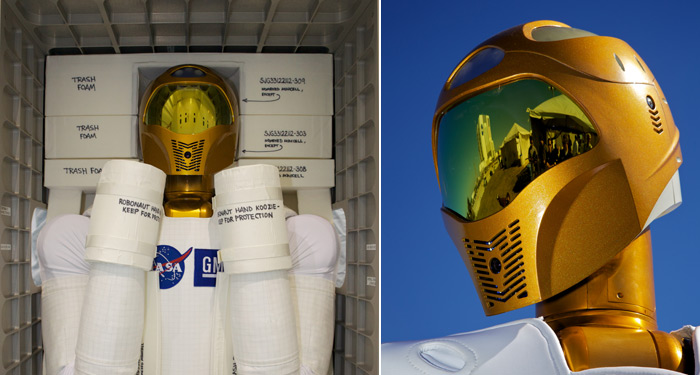
Space Shuttle Discovery took off a few hours ago for its last mission. After many delays due to relatively minor problems it took off just seconds before the launch window closed and successfully reached orbit. Discovery will spend 11 days in space and two spacewalks are scheduled. This thread will be updated throught the mission.
UPDATE - Discovery just landed after a completely successful mission. It is the first space shuttle to officially retire and it is the most reused and traveled manned spacecraft ever (and it appears it will remain so for many years).---
[ytx="UpVClvUzhPA"]UpVClvUzhPA[/ytx]
During the STS-133 mission Discovery will deliver to the International Space Station the Permanent Multipurpose Module (PMM), which was converted from the multi-purpose logistics module (MPLM) Leonardo. The PMM will provide additional storage for the station crew, and experiments may be conducted inside it, such as fluid physics, materials science, biology and biotechnology. Discovery also will carry critical spare components and the Express (Expedite the Processing of Experiments to the Space Station) Logistics Carrier 4 (ELC4) to the station. This is an external platform that holds large equipment that can only be transported by the space shuttle. The STS-133 mission will feature two spacewalks to do maintenance work and install new components.

Discovery (OV-103) was the third orbiter to enter service in 1984 (after Columbia and Challenger) and it is now the oldest of the remaining three. It conducted both return to flight missions after the accidents of Challenger and Columbia, it launched the Hubble Space Telescope and made the final Shuttle/Mir mission. This is her 39th mission, she has more than any other orbiter

Among its cargo Discovery carries the Robonaut2 humanoid robot that will be deployed to the ISS. Robonaut 2 or R2 is humanlike in appearance because it was designed to perform similar to human tasks. It has a torso, two 7dof arms with a 12doF hand each and a head where its vision equipment is placed. It can reach and grasp objects and tools and it is also capable to hold and handle soft materials like a cloth or an envelope. Robonaut2 is the latest step of a 15-year-old effort by NASA to develop a humanoid robot that will be able to operate alongside humans in the demanding environment of space. The Robonaut program started in 1997 with the first prototype and GM joined in 2006 to assist the development of the more advanced R2. It will be permanently installed in the Unity node of the space station and in the next months it will be deployed for its first test in the Destiny Laboratory. Initially it will be evaluated and used for teaching engineers how a dexterous robot behaves in space. In the near future it will gradually receive software and hardware updates (possibly lower body parts) and it will be engaged in simple or more elaborate tasks.
Some links:
NASA Space Shuttle
Robonaut at NASA JSC
Robotpig post on Robonaut
There is one more mission planned and funded, the STS-134 with Endeavour in April. An additional one, the STS-135 with the officially decommissioned Atlantis is also scheduled for June although funding isn’t yet approved.
(first photo: DLR/Thilo Kranz , other photos: NASA)